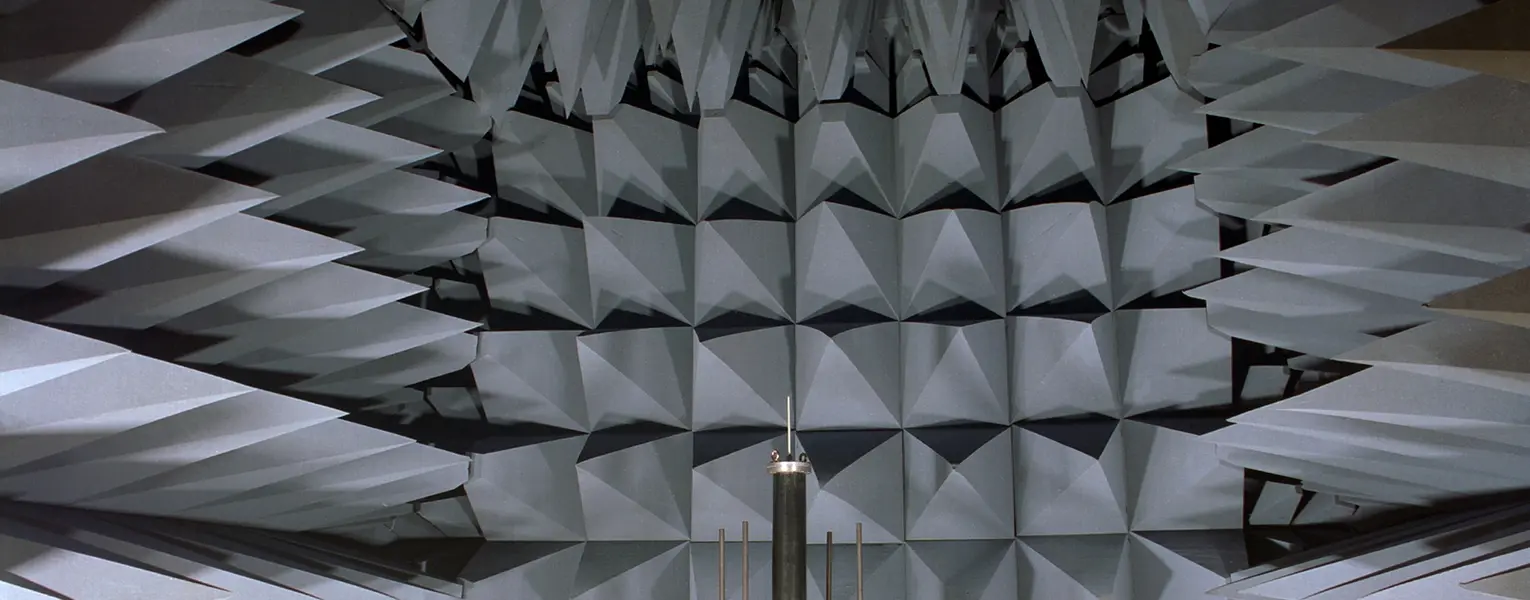Acoustic testing is performed in a chamber designed to thin or minimize sound waves or electromagnetic energy. The size and type of chamber can vary, depending on the size of the test object and the type of measurements sought.
Our acoustic test facility consists of an anechoic chamber, a reverberant chamber and a control center. The two chambers can be used separately or they can be connected via a removable 6-foot by 6-foot partition. When connected, the chambers are useful for sound transmission loss (STL) testing, as well as response testing of flat surfaces.
Anechoic Chamber Features
- 18-foot by 18-foot working area
- Free-field equivalent out to a 13-foot radius, according to ISO 3745 Annex A, from 63 Hz to 20 kHz
- Highly absorptive up to 50 kHz; has been used for ultrasonic experiments at those frequencies
- Noise floor estimated to be < 6 dBA
Reverberant Chamber Features
- 20-foot by 20-foot area
- Used by itself for sound emission measurements
- Can be arranged to conform to ISO/TR 7849:1987 standards for estimation of airborne noise emitted by machinery using ISO 3741-3743 procedures
Various types of test signals can be created and driven by our Audio Precision ATS-2 and SYS-2722A 2700 series audio test sets, allowing us to synthesize and record test signals up to 386 kS/sec. We routinely use MATLAB® for waveform creation and analysis on a control center computer.
The instrumentation set includes:
- One Bruel and Kjaer 4722 microphone on a rotating boom
- Four GRAS surface microphones
- One PCB Piezotronics high-sound intensity microphone
- Four Shure microphones for speech recordings
- One pair of Altec Lansing A7 speakers, which have a frequency response of 10 dB, sensitivity of 1 watt at 1 meter and crossover frequency of 900 Hz. Speaker dimensions are 30 in. wide by 24 in. deep by 54 in. high, and nominal coverage is 90° horizontal and 40 vertical.
Sound attenuation across the partition is measured as:
- 40 dB at 63 Hz
- 70 dB above 250 Hz
- 80 dB above 1 kHz

